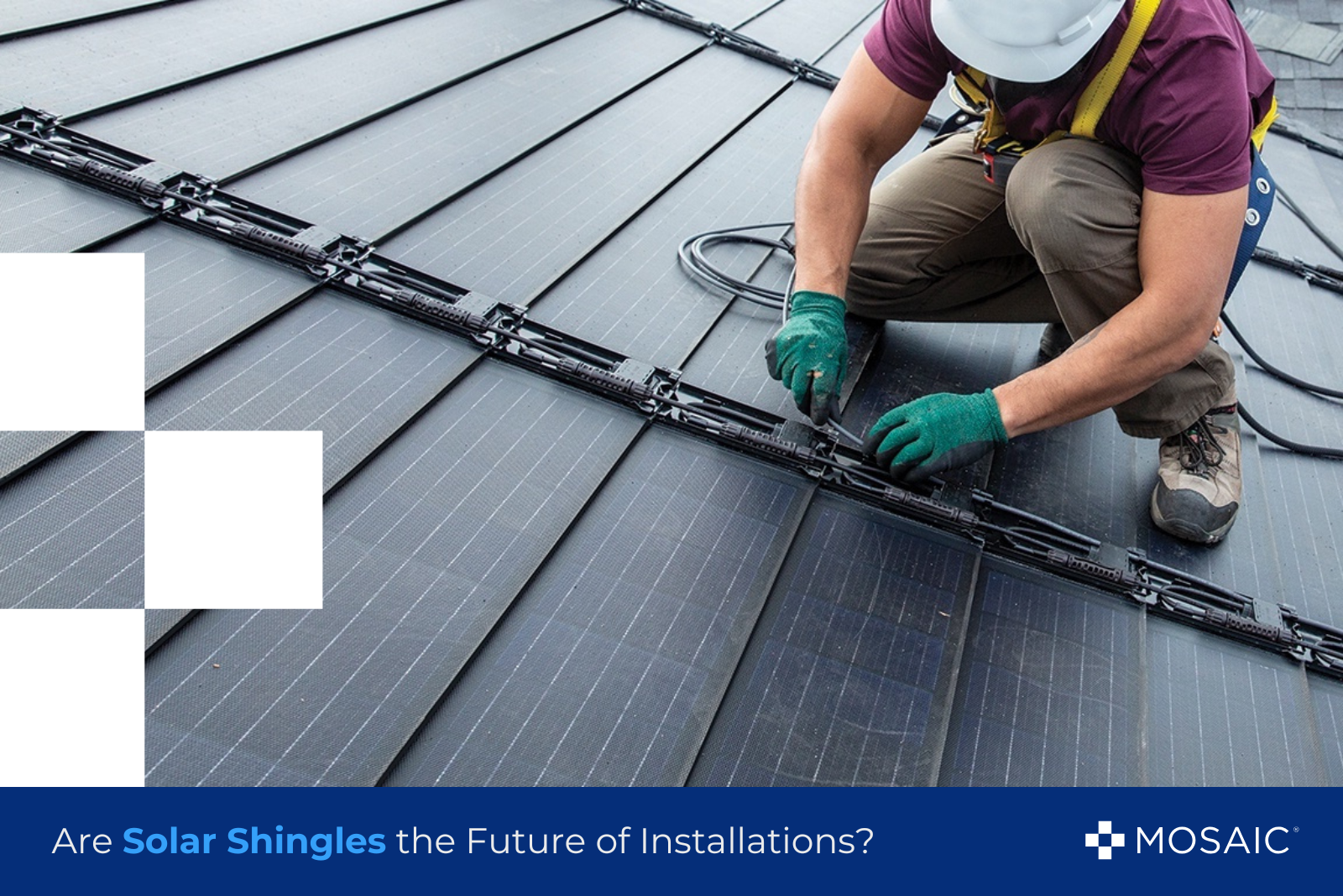Solar roofs are an emerging technology that replaces traditional roofing with solar shingles. By integrating solar panels into roofing materials, homeowners can benefit from solar energy and an upgraded roof at the same time. The technology has been gaining attention in recent years as a new, advantageous option for homeowners to choose solar. Products like GAF’s Timberline Solar Roof and Tesla’s Solar Roof are the main powerhouses behind this innovation — but can solar shingles really be the future of installations? Here are a couple of things to consider.
Advantages of solar roofs
Professionals often say the best time to get solar is when you get a new roof. Solar roof technology takes this to the next level and integrates the upgrades into one. Combining these two projects streamlines the process and can save customers time, money and hassle.
As with traditional solar panels, solar shingles can reduce dependence on the grid, possibly lower utility bills and increase home value. However, solar roofs are more durable than non-solar roofs. Tesla even claims the technology is able to withstand hurricane-like forces. The quality of the materials helps them stand up to the increased weather events, a huge consideration for homeowners who experience extreme weather or who prioritize the resiliency of their systems.
Since the solar roofs are such high quality, their warranties are longer and more comprehensive. Warranties can cover the roof and the solar system for up to 25 years. Solar shingles also have a more aesthetic, integrated look. They look less bulky on the roof and can function on roof designs that might not be a fit for regular solar panels.
Advancements on the horizon
Solar shingles have been commercially available since 2005. The specialized nature of solar shingles can make the process of adoption more complex, but with the scaling and manufacturing driven by top solar roof companies, this will become easier over time. Both GAF Energy and Tesla have opened U.S.-based manufacturing facilities to amp up production. With GAF Energy’s new facility, they’ve become the largest producer of solar roofing in the world, expecting to produce 300 megawatts annually. This increase in production is likely to make solar shingles more cost effective and more widely available.
Since solar roofs require a specialized installation, it can be harder to find a skilled professional to do the work. The process is also more labor intensive, as it requires integration into the existing roof structure. To make solar roofs a mainstream option, it’ll be necessary to train larger groups of dedicated workers to complete the installations, a possible win for clean energy jobs as well.
Like most home improvement projects, financing is key to making a solar roof project affordable for homeowners. Mosaic’s easy-to-use platform allows professionals to make financing available at the point-of-sale, so consumers can understand their monthly payment options for solar roof projects.
As solar shingles continue to evolve and gain popularity, they have the opportunity to change the game of solar and roofing — tying the two industries closer together and creating an innovative, streamlined way for homeowners to choose solar.
Financing applied for and processed through the Mosaic platform is originated by Solar Mosaic LLC or one of its lending/financing partners. Equal Housing Lender
